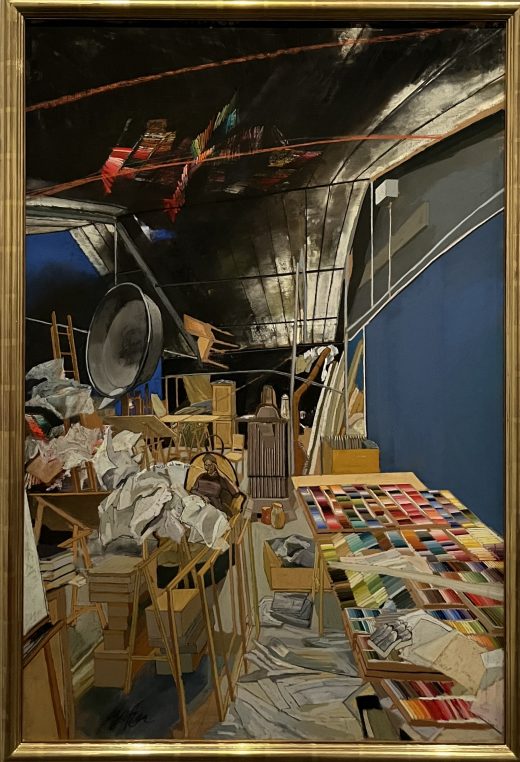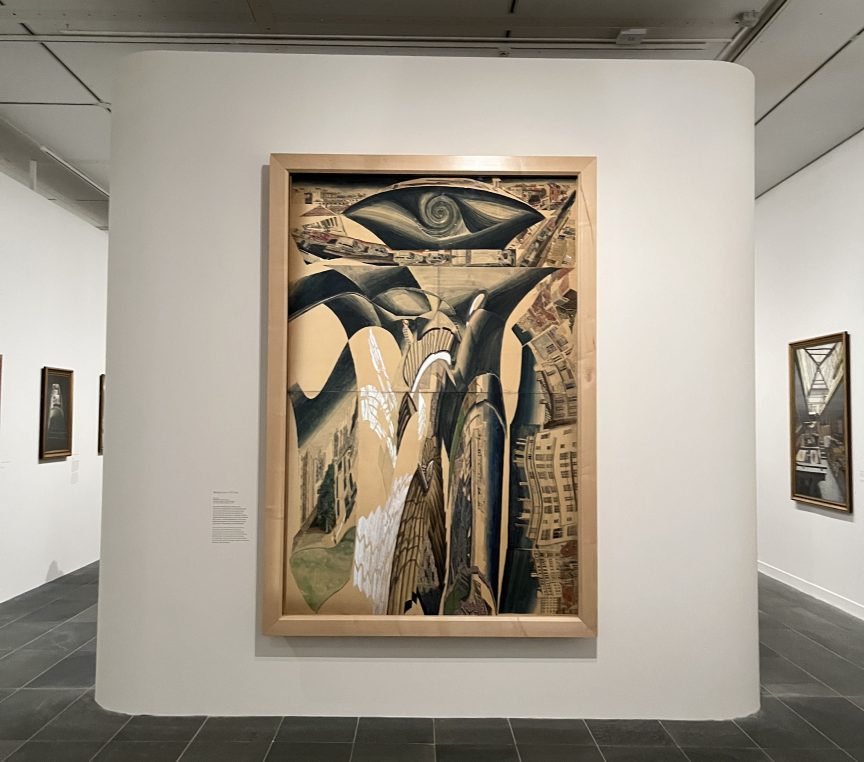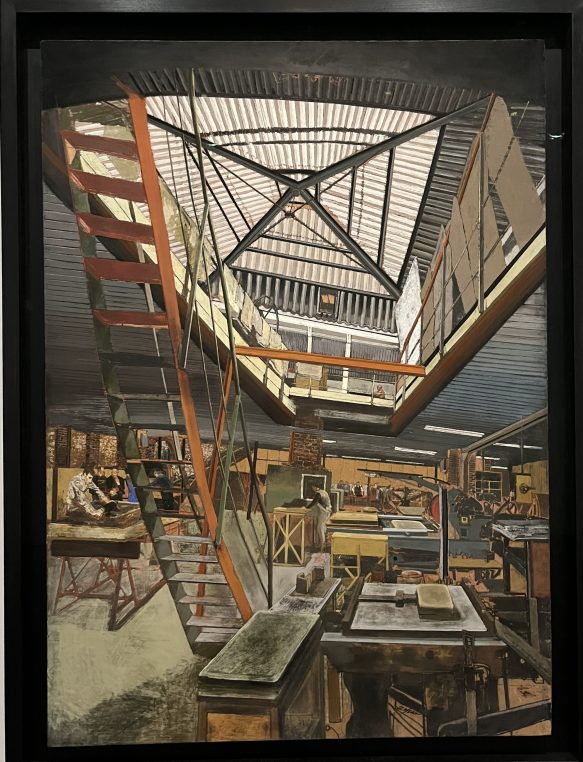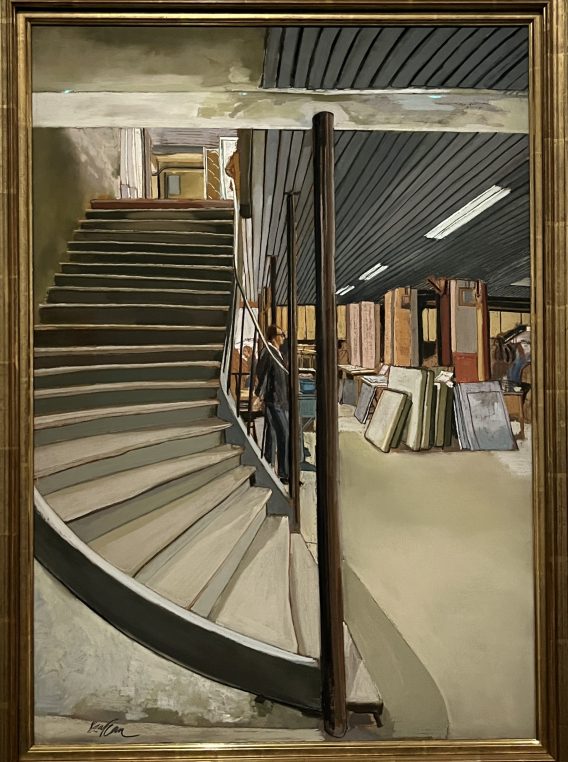I love Sam Szafran for having seen his paintings many times, first in the early 1980’s, his staircases on rue de Seine, then in Martigny and at Musée de la Vie Romantique with Daniel Marchesseau and at Galerie Claude Bernard, a long time friend and supporter. So I was probably expecting too much from this new show of sixty pastels, watercolors and charcoal, “Sam Szafran, Obsessions of a painter” at Musée de l’Orangerie, just below Monet’s waterlilies and next to the beautiful Renoir and Cézanne of the Walter Guillaume collection. The walls are bland white, the paintings hang far from each other as if there was too much space in the rooms, there is no atmosphere and the stunning works but seem soulless.
Born in a Jewish Polish family, Szafran (1934-2019), lived for four years in Australia after the war, which was fatal to his parents who were deported. He had no childhood to speak of and became a prisoner of his own obsessions. He came back to Paris in 1951, took evening classes in art from the City of Paris, and started working with pastels (like Edgar Degas), a very unfashionable medium at the time. His first group show took place in 1964 and, a year later, Claude Bernard gave him a solo show. The art dealer would later also host him in his magical house of la Besnardière, near Tours, where philodendrons and aralias fill a large greenhouse. For one year he painted there obsessively.

Interior II, rue de Crussol’s studio, May 1972, New York, The Metropolitan Museum of Art, Jacques and Natasha Gelman collection
The first series of pastels is of rue de Crussol near la République, where he had a studio. There are seven in the show and this is how he described them: “The various states, orderly and disorderly of this studio, shown in the eleven variations it inspired… reflect the span of intense emotions I was experiencing at the time ranging from relative stability and even serenity, through to anger and the most acute dramatic passion.” The details of each work are fantastic and the atmosphere and distortion of the glass roof, the pastel colors, the charcoal drawings are addictive.
In the following room, 10 views of the Bellini printing factory from 1972, are just as obsessive and eye-catching. They capture an era and an atmosphere in the Parisian workshop, where artists and machinery mingle and the first staircases appear, who would be so important later in his works. Studios, staircases and philodendrons are the three great themes in Szafran ‘s body of work and at the end of the show, his wife Lisette appears lost in the foliage.
There no question that all paintings are fabulous including the very large one, “Escalier-Ville” (staircase-city) given by Daniel Marchesseau to Fondation Giannada in Martigny, which occupies a whole wall. Intros pastel and watercolor on silk, Szafran experiments attempts at combining time and space simultaneously and incorporates the principles of cinematic vision, using zooms and close-ups.

Escalier-Ville, 2012-2015, watercolor and pastel on silk, Martigny, Fondation Gianadda, gift of Daniel Marchesseau in 2015
At the end of the show, make sure to visit the permanent collections which are stunning.
Until January 16, Musée de l’Orangerie.
Share this Post




One Comment on “Sam Szafran at l’Orangerie, a disappointment”
I saw the fabulous poster for this show in the Metro. I admit i’d never heard of him before. These all look pretty amazing so I’m wondering where the disappointment s were..?